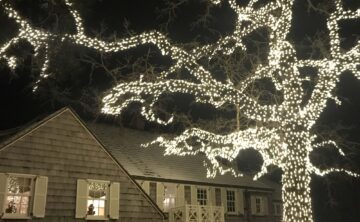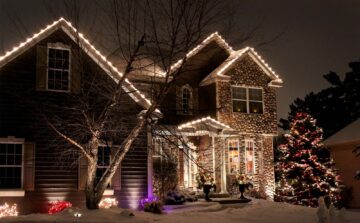How Did Holiday Lights Become a Tradition Around the World?
Ancient traditions involving fire and lights on the longest night of the year can be found all across the world. These winter solstice gatherings often celebrate the year’s harvest, along with expressions of hope and belief that longer sunny days will come again. These seasonal celebrations can be traced through history to the rise of agriculture as a way of life.
While details vary between cultures, there are traditions of observing winter solstice throughout the Northern Hemisphere (where it’s usually observed on December 21 or 22) and Southern Hemisphere (where it’s usually June 21 or 22). Along with a symbolic connection to the sun and crops, many cultures believe the lights represent knowledge, goodness and a way to ward off sadness we may feel during the darkest time of year.

The meaning of lights used in holidays around the world
In Minnesota, many of us associate holiday lights with Christmas and Hanukkah:
- The origin of Christmas lights: dates back to a German tradition of hanging candles on evergreen trees and an English tradition of putting candles in windows. Both traditions celebrated the arrival of the Christmas season. Flash forward a few later years when Thomas Edison introduced the first outdoor electric Christmas light display to the world, and the rest is history!
- The origin of lights used during Hanukkah goes deeper. The 8 lights of the menorah symbolize the miracle that happened during the rededication of the Temple of Jerusalem in 165 BCE.
In Peru, members of the indigenous Inca population honor their sun god, Inti Raymi, in a June solstice celebration, which culminates in starting a fire and then using a mirror to focus the sun’s rays toward the dawn that follows the solstice night.
Fairy Lights, or curly strings of tiny lights, are used in many religious celebrations including at the end of fasting during Ramadan. In the Hindu celebration of Diwali, they are also used in what’s known as the Festival of Lights.
In the Iranian celebration Shab-e Yalda which honors the sun god Mithra, people join together around fires in a tradition to protect each other from evil on the longest night of the year. The sunrise following solstice night is cheered as marking the arrival of goodness.

Additional resources to learn more about holiday lights used around the world
- 8 Winter Solstice Celebrations Around the World, History
- Festivals of Light, The Atlantic
- Winter Celebrations, National Geographic Kids
Want to brighten up your home this winter?
If the shorter days are getting the most of you, or you want to get extra festive this holiday season — contact our team for holiday light design and installation. View our full line of convenient holiday lighting services, and see how you can make your home the envy of the neighborhood.
Other items you may be interested in:

Residential Christmas Lights
Exterior Christmas Lighting Services for Minneapolis & St. Paul Residents Celebrate your home this season with custom holiday lighting services from the experts at Rainbow

5 Tips for Hanging Outdoor Christmas Lights in Minnesota
Our holiday lighting experts have compiled five tips to help you get professional-looking results you can be proud of! Use our tips on how to make your Christmas lights look professional

The History of Christmas Lights & How They’ve Changed Over Time
The tradition of adding cheerful lights to dark winter nights began in ancient times when people gathered around fires or decorated their homes with candles.




